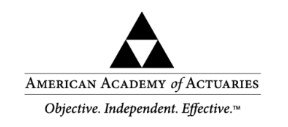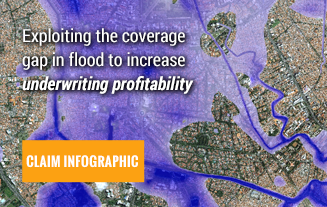 Last week the American Academy of Actuaries released a paper on flood insurance: The National Flood Insurance Program: Challenges and Solutions. April has provided a motherlode of excellent material on flood insurance, including the study from the CIPR: Flood Risk and Insurance, which we explored last week. Let’s check out the Academy’s monograph (a nice synonym for “study” or “white paper”, isn’t it?).
Last week the American Academy of Actuaries released a paper on flood insurance: The National Flood Insurance Program: Challenges and Solutions. April has provided a motherlode of excellent material on flood insurance, including the study from the CIPR: Flood Risk and Insurance, which we explored last week. Let’s check out the Academy’s monograph (a nice synonym for “study” or “white paper”, isn’t it?).
As the title states, the monograph is concerned with describing challenges the NFIP must confront, and solutions for them. The monograph (that really does sound good, doesn’t it?) is 96 pages, so we are going to heavily summarize the key challenges and solutions – but do note that the paper is absolutely worth a close reading or two.
Here are the key challenges, according the Academy, verbatim because they are so clear:
- The inherent contradictions in NFIP mandates. The NFIP is tasked with both achieving solvency and making coverage widely available at “affordable” rates, policy goals that may not be simultaneously achievable.
- The non-insurance activities of the NFIP. The NFIP performs a number of tasks in the public interest, such as promulgating maps, encouraging smart land use policies and building codes, and reducing the public’s dependence on post-event disaster assistance. The benefits of such tasks are not directly measured in the NFIP’s financial results from underwriting flood insurance.
- The NFIP’s interaction with other federal budget functions. The activities noted in the prior bullet point affect federal outlays in other areas such as disaster assistance or infrastructure investment to protect properties. A holistic view of the NFIP’s value needs to consider these functions.
- Changing hazard over time. The concern of rising sea levels illustrates the importance of looking at NFIP finances over a multi-decadal time horizon. Such long-term analysis is used by Congress in social insurance programs such as Social Security and Medicare.
- The impact of technology on what is possible to underwrite in the private market. Improvements in data and modeling tools have significantly improved the ability of private insurers and reinsurers to underwrite flood risk. The need for clarity around NFIP funding sources for it to compute actuarially sound rates. Actuarial standards and principles promulgated to guide ratemaking for private entities may not be completely relevant for public programs such as the NFIP, largely due to access to funding sources such as the ability to borrow from the Treasury and/or other means of post-event financing such as debt repayment surcharges. Addressing probability of sufficiency issues would mitigate this issue.
- The likelihood of adverse selection from private sector competition. Private markets will seek out policies that offer the greatest likelihood of profit. Increasing private sector participation in flood will make it increasingly difficult for the NFIP to subsidize high-risk policies absent taxpayer funding.
- Depopulation of the NFIP will affect its ability to repay public debt. If policies are moved to the private market without a mechanism to collect debt retirement surcharges from them, the NFIP may be unable to repay debt.
Some of the challenges to the NFIP above are actually benefits to the private flood market. But the AA of A is intent on remaining policy-neutral, so they don’t really get into it.
The solutions? Well, there is really only one they offer that matters, and it’s a biggie. In fact, in their conclusions, they list this solution before they list any of the challenges:
- Take-up rates in “low-risk” areas. Increasing the number of properties covered for flood (i.e. in low-risk areas) will not only help protect consumers, lending institutions, and local communities but will also improve the financial solidity of the insurance system by increasing revenues and achieving a better spread of risk.
The Risks of Hazard could not put that any better: we’ve tried … and tried … and tried. In fact, covering property beyond the high-risk areas is one of the raisons d’être for this blog, for the exact same reasons listed above, plus because it represents opportunity for insurers and underwriters. In the parlance we use (after Swiss Re), the American Academy of Actuaries is advocating for the reduction of the Protection Gap. Hear hear!

